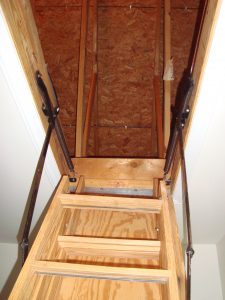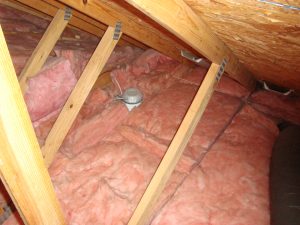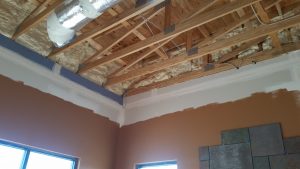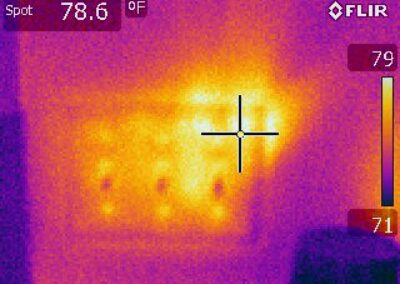 Air tight is the most critical element of green building design. The easiest way to be air tight in an existing home is using caulk at every gap and crack between building materials. The top and bottom plate of a wall, electrical outlets, doors and windows, all penetrations need to be sealed and air tight. The attic access should be considered as a door and weather stripped and insulated. The rim board (the place where floor joist meet the exterior wall) is always a huge air leak. This can be fixed in an unconditioned crawl or an unfinished basement.
Air tight is the most critical element of green building design. The easiest way to be air tight in an existing home is using caulk at every gap and crack between building materials. The top and bottom plate of a wall, electrical outlets, doors and windows, all penetrations need to be sealed and air tight. The attic access should be considered as a door and weather stripped and insulated. The rim board (the place where floor joist meet the exterior wall) is always a huge air leak. This can be fixed in an unconditioned crawl or an unfinished basement.
There are many places where air leaks impact comfort and energy-efficiency in the average home. Ducts that are not sealed tight leak out air before it reaches the room it is intended to heat or cool. Double Hung windows have a weak air seal where the two window panes intersect. A finished wood floor will leak air into the crawl space below. The tongue and groove vaulted ceiling will leak air to the outside of the thermal envelope. Air always leaks around recessed can lights. Any penetration in the walls from outside for water lines, electrical panel, or dryer vents are consistently a place for air leaks.


Seal these gaps and cracks with a silicone caulk to stop air leakage before you take any other action. The next step, insulation, can also do the air sealing if you use spray foam.




